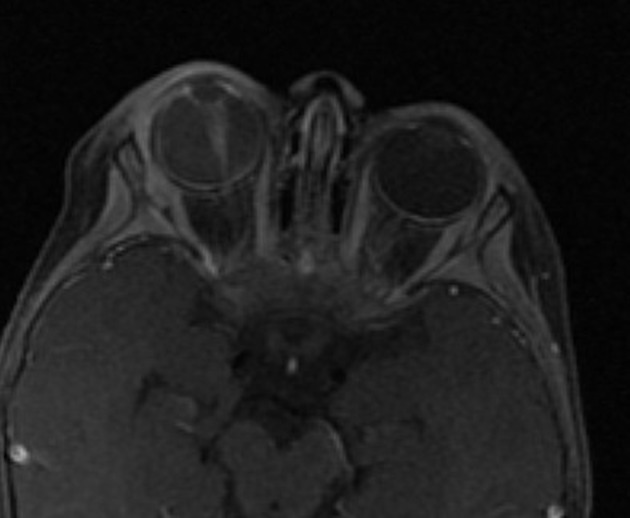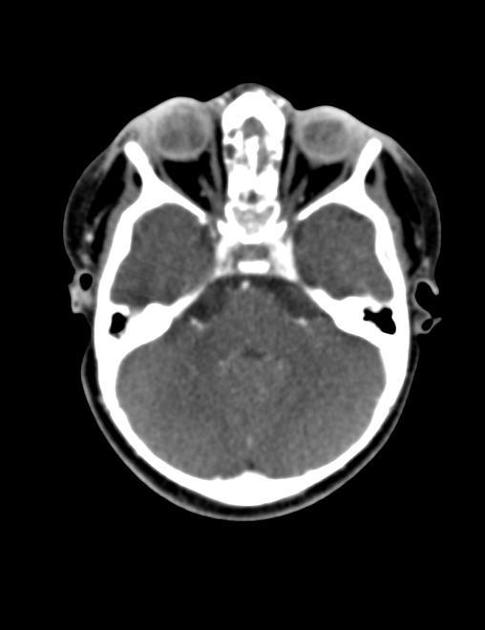Leukocoria (also spelled as leucocoria or leukokoria) refers to an abnormal white reflection from the retina of the eye. Despite its color, the reflection is related to the familiar red-eye effect. Usually, when a light is shone through the iris, the retina appears red to the observer. In leukocoria, the retina abnormally appears white.
Epidemiology
Associations
Leukocoria can be seen in the normal-sized eye or associated with microphthalmia.
-
normal sized eye
- calcified, e.g. retinoblastoma; retinal astrocytoma
- non-calcified, e.g. toxocaral endophthalmitis, Coats disease
-
microphthalmia
- unilateral, e.g. persistent hyperplastic primary vitreous (PHPV)
- bilateral, e.g. retinopathy of prematurity, bilateral PHPV
Pathology
Etiology
The top 4 causes of leukocoria are:
- retinoblastoma: ~58%
- persistent hyperplastic primary vitreous: ~28%
- Coats disease: ~16%
- larval granulomatosis: ~16%
As with anything, causes can be considered using a surgical sieve approach.
Tumors
Developmental
- persistent hyperplastic primary vitreous
- Coats disease
- retinopathy of prematurity
- coloboma of choroid or optic disc
-
neurocutaneous syndromes
- tuberous sclerosis (TS) (angiomata)
- von Hippel Lindau syndrome (vHL) (choroidal ostema)
Infection
- larval granulomatosis
- uveitis
- toxocara canis (toxocariasis)
Degenerative
- posterior cataract
- senesent calcification
- optic nerve drusen
- phthisis bulbi








 Unable to process the form. Check for errors and try again.
Unable to process the form. Check for errors and try again.